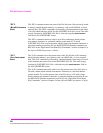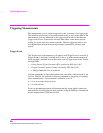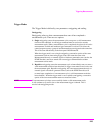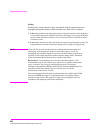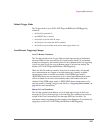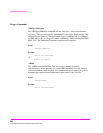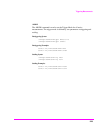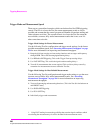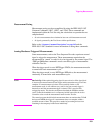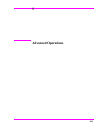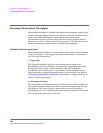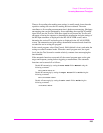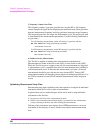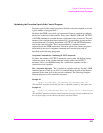
230
S:\agilent\8920\8920b\PRGGUIDE\BOOK\SECTIONS\tm.sec
Triggering Measurements
Trigger Mode and Measurement Speed
There are two generalized scenarios which can be described for GPIB triggering
control. The first is to have the Test Set return measurement results as fast as
possible and assume that the control program will handle all transient settling and
value tolerance activities. The second scenario is to have the Test Set return the
most reliable, accurate, fully settled measurement results that it can, even if it
takes some time to do this.
Trigger Mode Settings for Fastest Measurements
Use the following Test Set configuration and trigger mode settings for the fastest
possible measurement speed. See
“Increasing Measurement Throughput” on page
234
for more information on improving measurement throughput.
1. Range hold all auto-ranging and auto-tuning functions and set ranges and frequency
through GPIB. This avoids autoranging/autotuning delays.
2. Use REPetitive RETRiggering. This avoids Trigger Event processing delays.
3. Use FAST SETTling. This avoids the signal transient settling delays.
1
4. Turn off all measurements that are not required. This avoids any delays caused by
contention for measurement resources within the Test Set.
Trigger Mode Settings for Most Reliable Measurements
Use the following Test Set configuration and trigger mode settings to get the most
accurate, most reliable, fully settled measurement results. See
“Increasing
Measurement Throughput” on page 234
for more information on improving
measurement throughput.
1. Turn on all autoranging and autotuning functions. (This is the Test Set’s default turn-on
and PRESET state.)
2. Use SINGle RETRiggering.
3. Use FULL SETTling.
4. Individually trigger each measurement.
1. Using FAST settling increases the possibility that transient signal conditions which
occur during the measurement cycle will be included in the measurement result.



